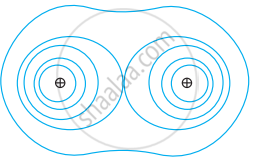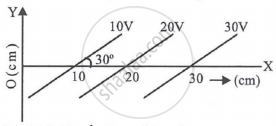Advertisements
Advertisements
प्रश्न
Draw equipotential surfaces for (i) an electric dipole and (ii) two identical positive charges placed near each other.
उत्तर
 |
 |
| (i) | (ii) |
Some equipotential surfaces for (i) a dipole, (ii) two identical positive charges.
APPEARS IN
संबंधित प्रश्न
The discharging current in the atmosphere due to the small conductivity of air is known to be 1800 A on an average over the globe. Why then does the atmosphere not discharge itself completely in due course and become electrically neutral? In other words, what keeps the atmosphere charged?
Define equipotential surface.
Assertion: Electric field is discontinuous across the surface of a spherical charged shell.
Reason: Electric potential is continuous across the surface of a spherical charged shell.
The diagrams below show regions of equipotentials.
(i) |
(ii) |
(iii) |
(iv) |
A positive charge is moved from A to B in each diagram.
Which of the following is NOT the property of equipotential surface?
Equipotential surfaces ______.
- are closer in regions of large electric fields compared to regions of lower electric fields.
- will be more crowded near sharp edges of a conductor.
- will be more crowded near regions of large charge densities.
- will always be equally spaced.
The work done to move a charge along an equipotential from A to B ______.
- cannot be defined as `- int_A^B E.dl`
- must be defined as `- int_A^B E.dl`
- is zero.
- can have a non-zero value.
Equipotential surfaces are shown in figure. Then the electric field strength will be ______.

